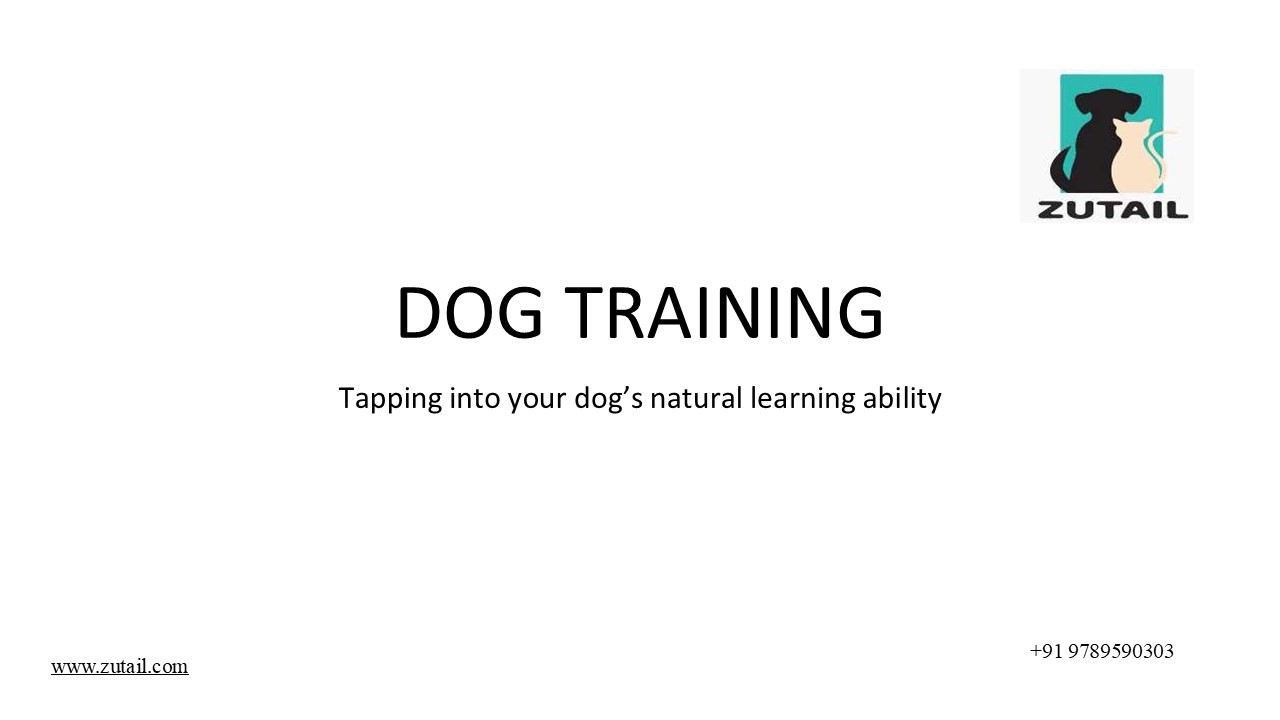Dog Training service at Home | best dog training centre - PowerPoint PPT Presentation
Title:
Dog Training service at Home | best dog training centre
Description:
Make an appointment with Zutail for dog training centre. We teach behavior and obedience in our personalized in-home training centre. best dog training near me – PowerPoint PPT presentation
Number of Views:0
Title: Dog Training service at Home | best dog training centre
1
- DOG TRAINING
- Tapping into your dogs natural learning ability
91 9789590303
www.zutail.com
2
How Dogs Learn
- Dogs learn in one of two ways They learn by
associating an emotion with an experience. An
experience can be positive, negative or neutral,
and this emotional effect predicts how well they
react to that same experience next time around. - Dogs also learn through their actions getting
reinforced. Reinforcement can be either positive
(he is rewarded) or negative (he is punished) - Very much like children, huh? Except for one key
difference Dogs live in the now, so actions
need to be reinforced immediately (within
seconds) after they happen. So be careful about
what reinforcement you apply, and when. - www.zutail.com
91 9789590303
3
Dog Cat Talk Knowing canine body
al
language is cruci
www.zutail.com
4
Dogs Need to Chew
- Dogs need to chew and if you dont provide
appropriate and enticing options for your dog, it
will find something else to chew on. - By putting away items you dont want your dog to
chew and supervising and re-directing
inappropriate chewing to the options youve
provided, you can effectively fixate your dog on
its own chew toys and save yourself a lot of
damage and frustration. - By providing your dog with its own toy box, your
dog will know where to go when it wants
something to chew.
www.zutail.com
5
Dogs Need Socialization
- A dog thats not thoroughly socialized before
sixteen weeks of age is more likely to experience
a fear reaction to anything new after the
socialization period is over. - Socialization means exposing your dog to
everything it may come in contact with throughout
its life before its brain is fully developed,
which occurs at around sixteen weeks of age. - This includes, but is not limited to adults,
children, men and women of different sizes,
shapes and colors, different sizes, breeds and
colors of friendly and healthy dogs,
accessories, glasses, beards, canes, wheel
chairs, sights, sounds, smells, new
environments, etc.
www.zutail.com
6
Aggression Prevention
- Assertive Challenges Resource Control
- Ignore Demands If you dont follow, your dog
cant lead. - Everything must be Earned Control the resources
by requiring your dog to earn everything of
value. - Leave It
- Your dog learns to happily remove itself from
whatever its focused on - when it hears the leave it cue preventing
possessive aggression. - Drop It and Take It
- Your dog learns to happily drop any item on cue
preventing possessive - aggression.
- Putting special treats in your dogs food bowl
while its eating - Putting special treats in your dogs food bowl
while its eating teaches your dog that people
approaching its food bowl are giving instead of
taking away. Because of this your dog prefers you
in, instead of out of its food bowl, preventing
food bowl aggression.
www.zutail.com
7
Fear Aggression
- Socialization If your dog likes new dogs and
people, its unlikely to bite them. - Protect your Dog Protect your dog from those
who may tease, frighten or hurt it. - Handling Exercises Teach your dog to enjoy
being handled. - Positive Reinforcement Training Positive
- reinforcement training prevents punishment that
causes fear, stress, anxiety and aggression. - Remember, every canine-behaviour, no matter how
annoying, is normal and natural!
www.zutail.com
8
Training Treats
- Training treats are a temporary training tool to
be used properly then put away. Remember, any
tool is only as good as the person using it. - Well use treats to create and polish behaviours
and put behaviours on cue, then fade the
training treats away replacing them with other
valued rewards such as attention, praise, walks,
car rides, games, etc. - Use properly, food rewards, also called training
treats, serve the following purposes - to motivate your dog to think and make choices
- to lure your dogs body preventing the need for
physical manipulation - to reinforce the desired behaviour making it more
likely your dog will repeat the behaviour and
understand the meaning of the cue
www.zutail.com
9
- Once your dog understands each cue and signal
well take - the following steps to fade the treats/rewards
- First well begin by asking for more responses
for each treat reward, requiring the dog to work
harder for its rewards. Well reinforce the
behaviour intermittently meaning the dog knows
the treat is coming it just doesnt know when.
The dog keeps offering the behaviour in
anticipation of the eventual reward. Like - the slot machine, the secret to rewarding
intermittently is to only reward the dog often
enough to keep it playing your game. - Next, well remove the treats from our body so
our dogs response doesnt depend on the
presence of food. - Then well gradually replace the food with other
real life rewards that are valuable to your dog,
things it will receive daily anyway such as
meals, walks, car rides, games, toys, safe
bones, cuddle time, attention, off leash play
and play with doggy friends.
www.zutail.com
10
Thank You!
www.zutail.com































